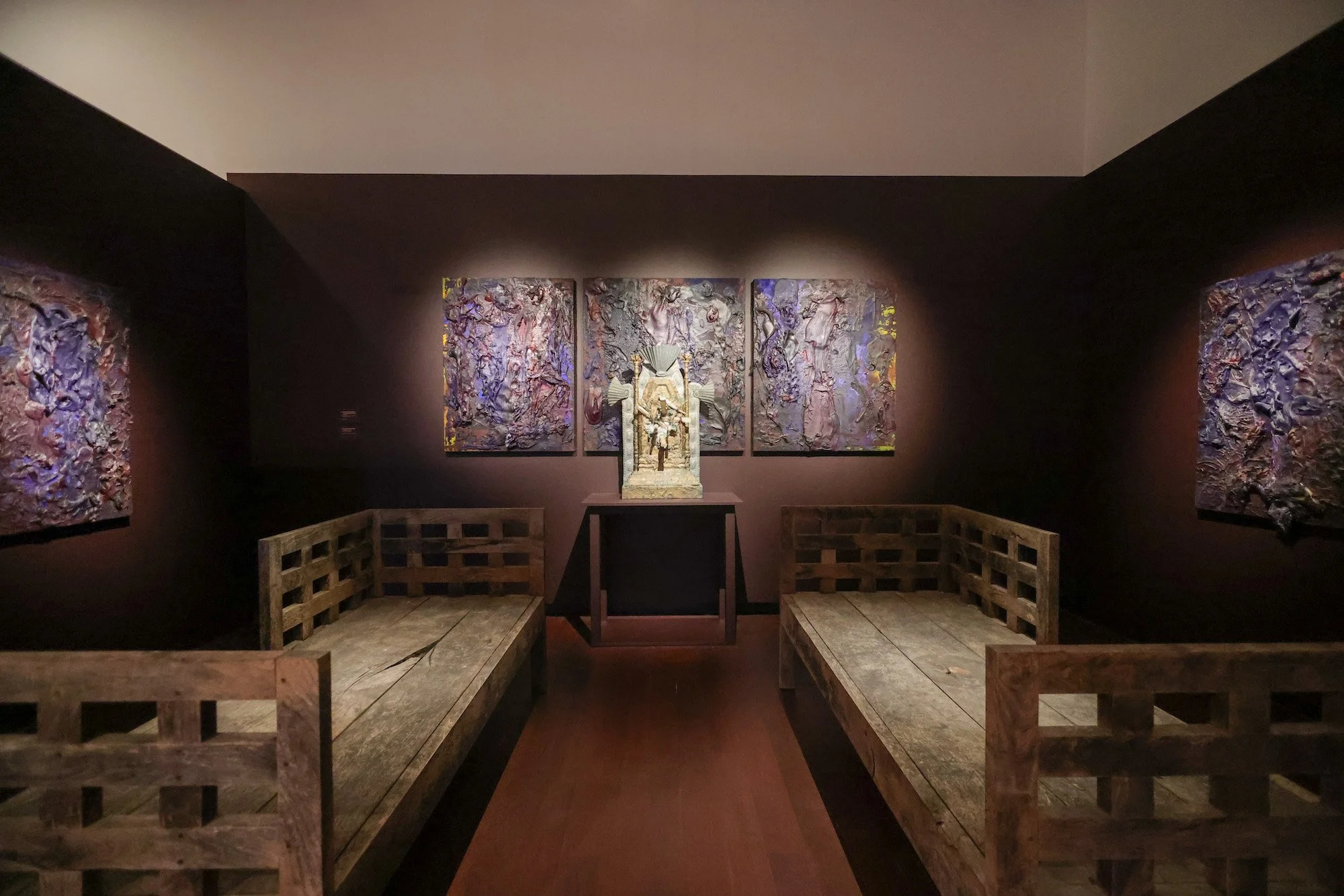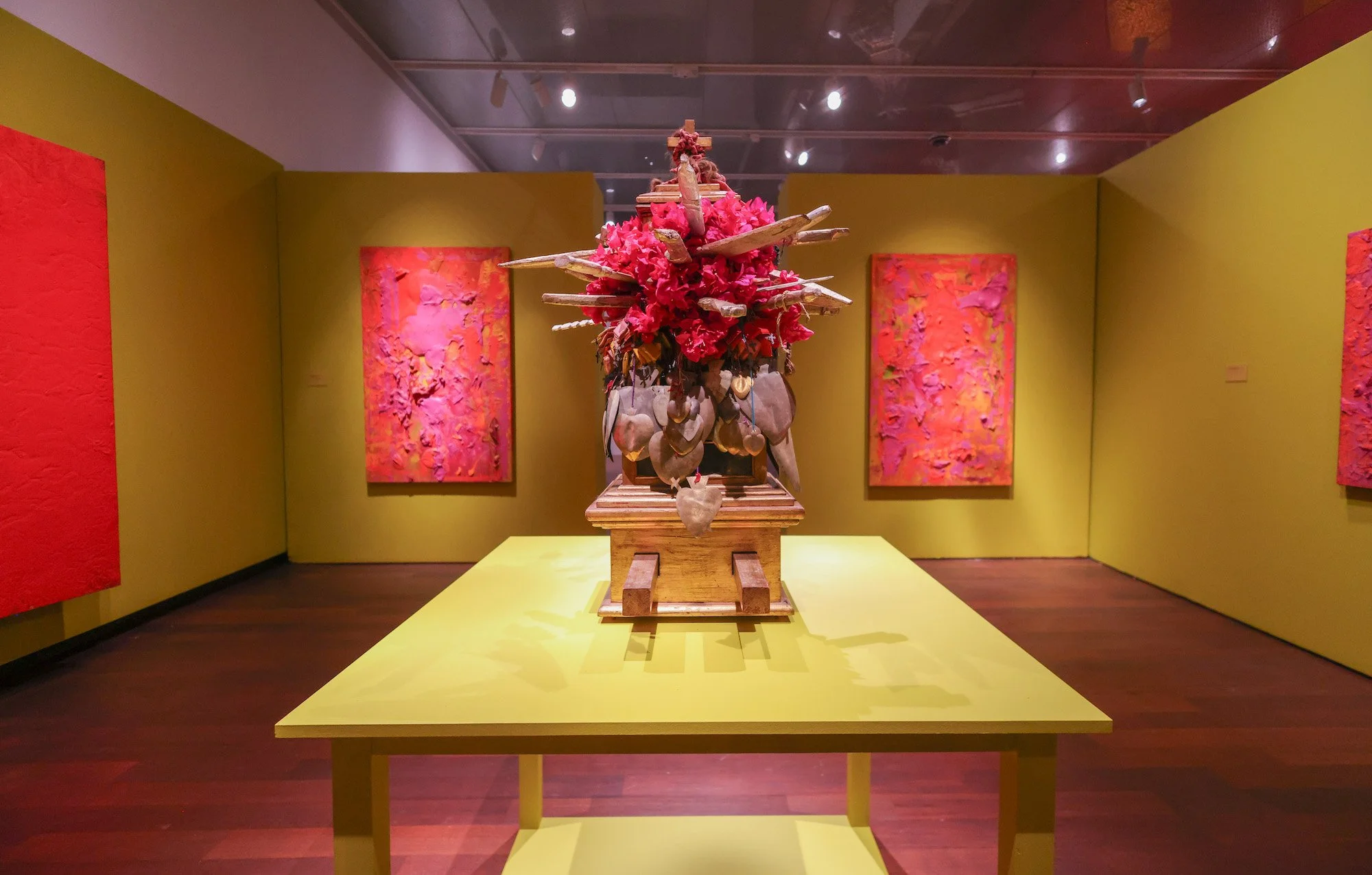“The Elegy of Distance”: A Return and a Farewell
In a tribute to the life and legacy of Michael Tracy, The Elegy of Distance at the McNay Art Museum revisits the work of an artist whose practice spanned painting, sculpture, ritual performance, and craft. On view through July 27, the exhibition marks both a return and a farewell: the McNay launched Tracy’s career with his debut show in the 1970s and now presents the final exhibition he helped shape before his passing in June 2024. Organized by René Paul Barilleaux in collaboration with Christopher Rincón, The Elegy of Distance frames Tracy not just as a visionary maker but as a queer artist whose engagement with border politics, spirituality, and collaborative craftwork forged a body of work that transcends conventional categories. In this conversation, Christopher Rincón, President of the Michael Tracy Foundation and Director of the River Pierce Foundation, reflects on Tracy’s fusion of activism and art, his intimate relationship to place, and the enduring resonance of his singular visual language.
Xuezhu Jenny Wang: Can you share specific details about how Tracy engages with activism and border issues?
Christopher Rincón: The most significant action Michael devised in collaboration with other artists was the performance known as Sacrifice II: The River Pierce. The piece was staged as a Via Crucis procession (The Stations of the Cross) in honor of the procession performed each Good Friday in his adopted border home of San Ygnacio since its founding. Michael’s procession, however, presented “stations” commissioned by collaborators whose installations reflected obstacles encountered by Latin American immigrants traversing the harsh landscape in search of political asylum. The performance culminated in the immolation of his iconic sculpture Cruz: La Passion, whose destruction mirrored the death and resurrection of Christ, in hopes that the ritual action would resurrect relief for asylum seekers as well as for the health of the Rio Grande. The Via Crucis theme in his painting oeuvre continued to address the themes throughout the decades of production, mixing high art, artisanal craft, theology, and social justice in a way unique to Michael and his place in geography.
XJW: He also had a jewelry-making practice. Is it considered in the show, or does it inform his artistic sensibilities?
CR: The jewelry was just another variation of his affinity for collaborating with talented craftsmen from around the world. Geography, and his place in it, was marked by an ever-evolving collection of objects and individuals who, at times, became collaborators. He worked in India for over 20 years with the same goldsmiths, some of whom he mentored by challenging them with Western aesthetic concepts. In turn, he learned from them about ancient techniques, which he then used in updated ways to create a new style. Although the jewelry is not considered in The Elegy of Distance, the mesquite furniture featured in the show was a similar aesthetic collaboration with talented craftsmen.
XJW: What do you find most striking about the works in the retrospective?
CR: The most striking thing about Michael's work is his commitment to the forms in his imagery, the sculptural shapes of his paintings, and his singular relationship to applying paint on the surface of his works.
XJW: The press release mentions the term “outsider artist”—can you elaborate on what this entails? Does the exhibition consider Tracy an “outsider artist”—why or why not?
CR: I don't think Tracy's education, training, or provenance qualifies him as what the art world considers an outsider artist, but because he released himself from the rat race while in early middle age, he certainly had the kind of fun an outsider artist would.
Michael Tracy: The Elegy of Distance is on view at the McNay Art Museum, San Antonio, from March 1 to July 27, 2025.
This interview has been edited for length and clarity.



